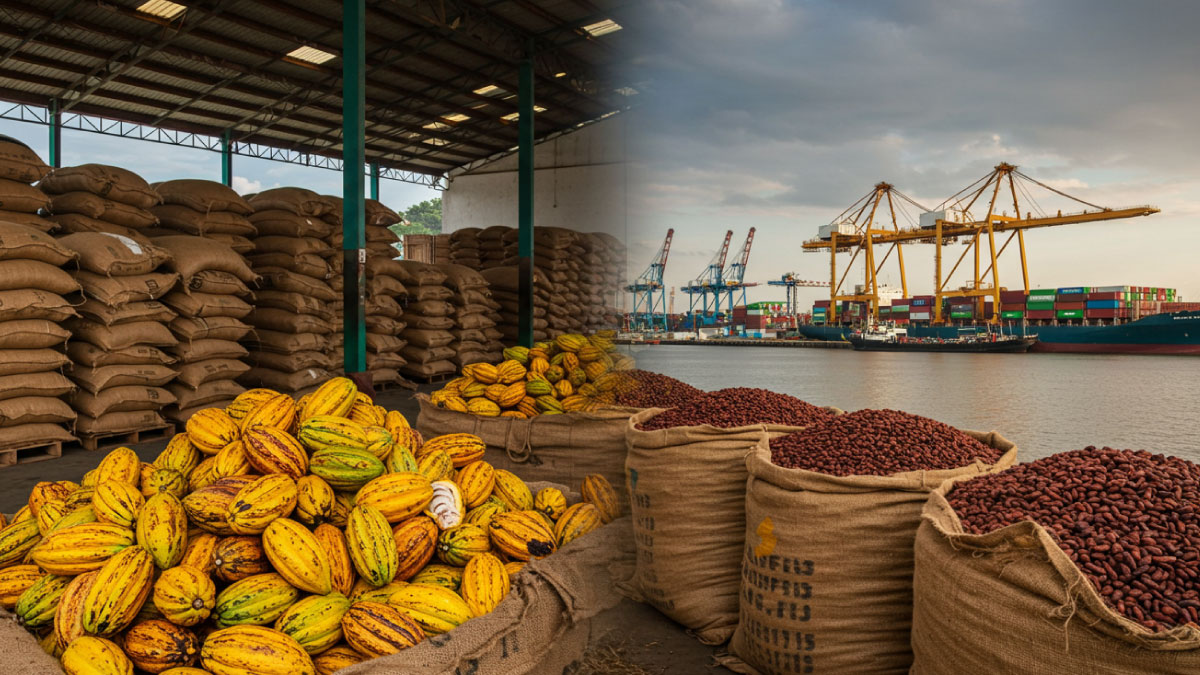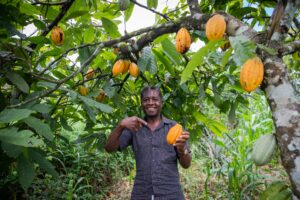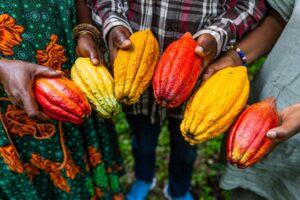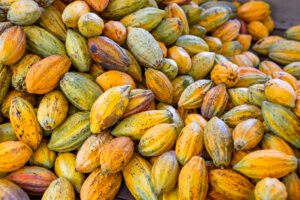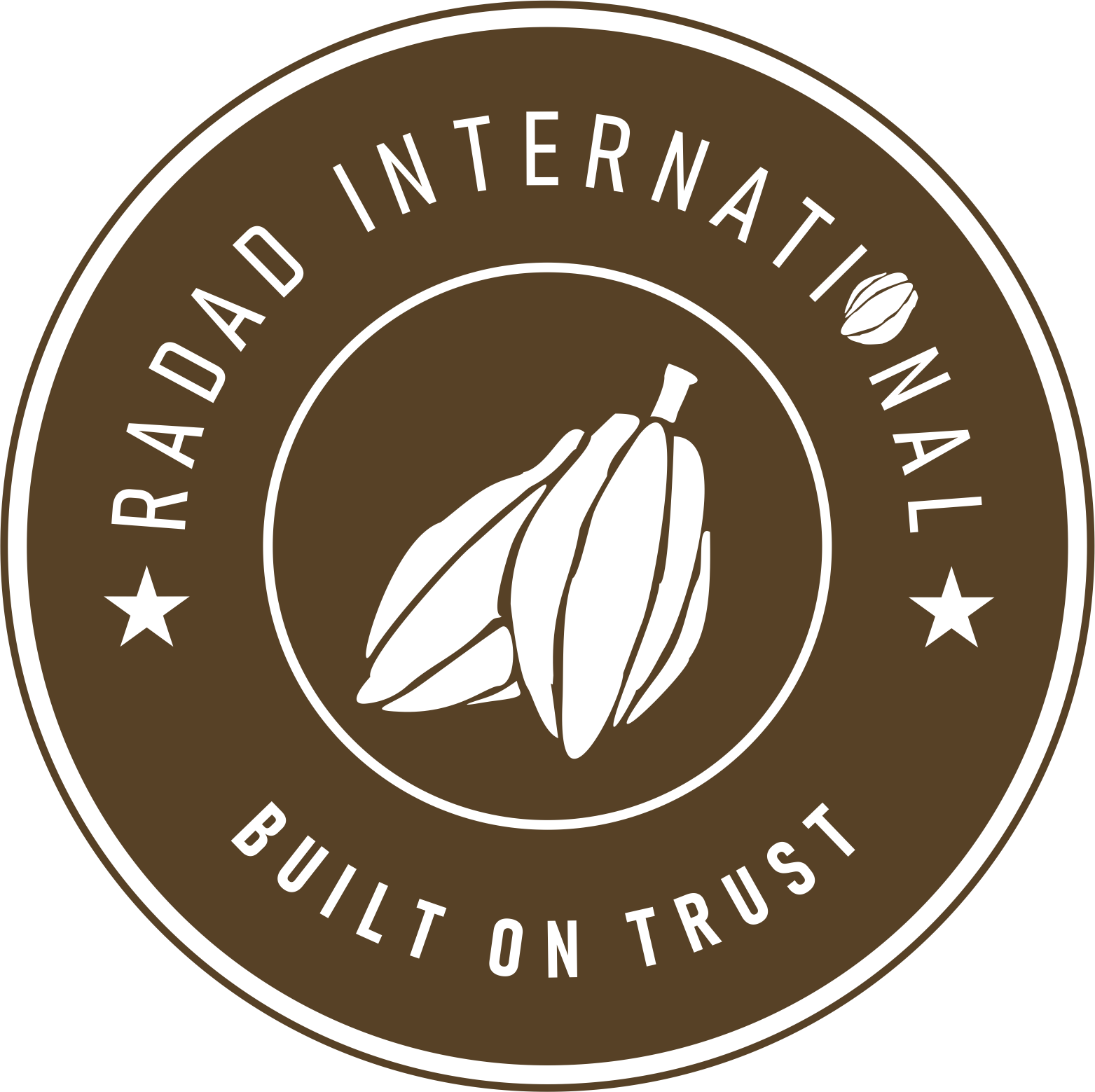Cocoa is one of the world’s most valuable agricultural commodities, forming the foundation of the global chocolate industry and many other food and cosmetic products. For anyone involved in confectionery, beverages, or bulk food production, sourcing quality cocoa is a key business decision. And when it comes to the best quality beans, Africa is at the heart of it all.
Africa produces over 70% of the world’s cocoa, with countries like Côte d’Ivoire, Ghana, Nigeria, and Cameroon leading global exports. These regions have the ideal combination of climate, fertile soil, and traditional farming knowledge that results in cocoa beans with rich flavor profiles, high butter content, and strong fermentation characteristics.
But while Africa is the main source, buying cocoa from the continent can be complex for first-time buyers. It involves understanding quality grades, certifications, export processes, and logistics. The goal of this guide is to explain everything clearly — so you can confidently buy cocoa from Africa, whether you need raw cocoa beans, cocoa nibs, cocoa powder, or cocoa mass in bulk.
This guide will help you understand:
- How the African cocoa supply chain works
- What to look for in a trusted cocoa supplier or exporter
- The different cocoa products available for purchase
- How certification (USDA, EU, Halal) affects export quality
- Step-by-step process of buying cocoa from Africa
By the end, you’ll have a practical understanding of how to source high-quality, certified cocoa from Africa safely and efficiently.
Overview of the African Cocoa Industry and Major Producing Countries
Côte d’Ivoire (Ivory Coast)
Ghana
Nigeria
Cameroon
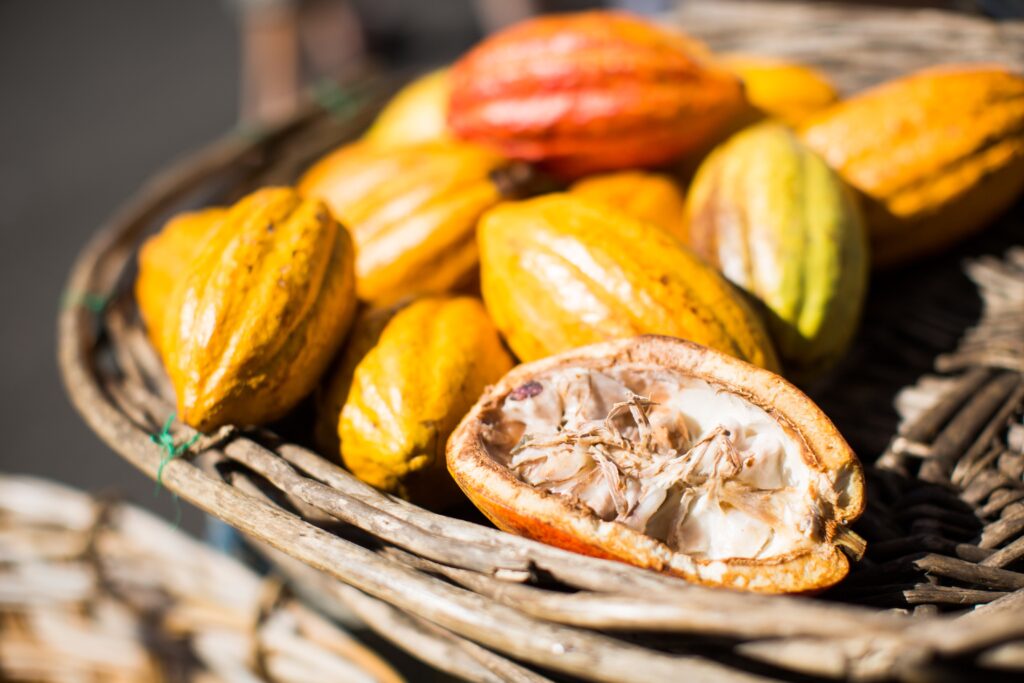
Overview of the African Cocoa Industry and Major Producing Countries
Côte d’Ivoire (Ivory Coast)
Ghana
Nigeria
Cameroon

How to Buy Cocoa from Africa – Step-by-Step Process
Step 1: Define Your Cocoa Requirements
-
The type of cocoa product (beans, nibs, butter, mass, or powder).
-
Quality grade (fermented, organic, certified, etc.).
-
Packaging size and moisture limits.
-
Certifications required (USDA, EU, Halal, Fairtrade, etc.).
-
The quantity and delivery timeline.
Step 2: Research and Identify Reliable Exporters
-
Hold recognized export licenses and certifications.
-
Have consistent supply capacity.
-
Maintain traceable sourcing systems.
-
Offer transparent product documentation.
Step 3: Request Product Samples
-
Verify moisture content (should be under 7.5%).
-
Check for uniform bean size and absence of mold.
-
Inspect color and fat content in processed products like butter or powder.
Step 4: Verify Certifications and Compliance
-
Certificate of Origin (issued by the Chamber of Commerce).
-
Phytosanitary Certificate (proving the product is pest-free).
-
Quality Analysis Report (for moisture, purity, and fermentation).
-
Organic or Halal Certificates, if required.
Step 5: Negotiate Price and Terms
-
Unit price (per MT or kg).
-
Delivery terms (FOB, CIF, or EXW).
-
Payment method (Letter of Credit, TT, or Escrow).
-
Delivery timeline and incoterms.
-
Minimum Order Quantity (MOQ) and repeat order conditions.
Step 6: Arrange Inspection and Logistics
-
Container type: Cocoa is usually shipped in 20-ft or 40-ft containers.
-
Ventilation: Containers must be properly ventilated to prevent moisture damage.
-
Insurance: Always insure your cargo against loss or damage during transit.
Step 7: Complete Customs and Documentation
-
Bill of Lading (B/L).
-
Commercial Invoice.
-
Packing List.
-
Certificate of Origin.
-
Phytosanitary Certificate.
-
Quality Test Report.
Step 8: Establish Long-Term Supplier Relationships
-
Better pricing.
-
Reliable delivery schedules.
-
Exclusive access to premium-grade cocoa.
-
Priority during high-demand seasons.
Step 9: Understand Market Timing
-
Main crop: October to March.
-
Light crop: April to July.
Step 10: Ensure Sustainability and Traceability
Types of Cocoa Products You Can Buy from Africa
Raw Cocoa Beans
-
Grades: Well-fermented, fair-fermented, and unfermented.
-
Moisture Content: Typically below 7.5%.
-
Packaging: Exported in jute or sisal bags, each weighing 60–65 kg.
-
Uses: Chocolate manufacturing, cocoa mass production, and cocoa butter extraction.
Cocoa Nibs
-
Key Features: Intense cocoa flavor, crunchy texture.
-
Uses: Chocolate bars, toppings, smoothies, and nutraceuticals.
-
Export Form: Vacuum-sealed bags or bulk food-grade sacks.
Cocoa Mass (Cocoa Liquor)
-
Uses: The base ingredient in chocolate, cocoa powder, and confectionery products.
-
Quality: High-fat content (52–56%) depending on the origin.
-
Export Options: Block or liquid form, shipped in cartons or drums.
Cocoa Butter
-
Uses: Chocolate manufacturing, cosmetics, skincare, and pharmaceuticals.
-
Properties: Melts at body temperature, providing a silky texture.
-
Certifications: Often available as organic, Halal, or USDA-certified cocoa butter.
Cocoa Powder
-
Types: Natural cocoa powder and alkalized (Dutch-processed) cocoa powder.
-
Uses: Beverages, bakery products, desserts, and confectionery.
-
Export Options: Bulk 25 kg bags or retail packs.
Cocoa Shell
-
Uses: Tea infusions, animal feed, biomass fuel, and compost.
-
Advantages: Rich in dietary fiber, low in fat, and eco-friendly.
-
Export Options: Dried flakes or powdered form.
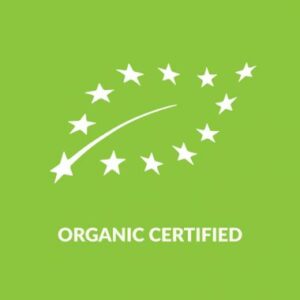
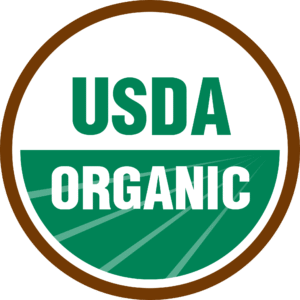
Certifications and Quality Standards for Buying Cocoa from Africa
USDA-Certified Organic Cocoa
-
Benefits: Ideal for health-conscious and eco-friendly brands.
-
Verification: Managed through accredited inspection bodies and organic control organizations.
-
Export Readiness: Common among exporters in Ghana, Nigeria, and Uganda.
EU-Certified Organic Cocoa
-
Key Difference: EU organic rules are often more specific about post-harvest handling and storage.
-
Preferred Markets: Ideal for buyers targeting the European chocolate and confectionery sector.
-
Labeling Advantage: Ensures compliance with EU import laws for organic food products.
Halal-Certified Cocoa
-
Why It Matters: Critical for buyers serving Muslim-majority markets in the Middle East, Asia, and parts of Africa.
-
Certified Products: Cocoa butter, cocoa mass, and cocoa powder are often Halal-certified.
-
Market Impact: Expands reach into high-demand halal consumer markets without compromising quality.
Fairtrade Certification
-
Purpose: Promotes social justice and environmental responsibility.
-
Farmer Impact: Offers financial incentives for maintaining ethical farming standards.
-
Consumer Value: Builds trust and brand loyalty among ethically minded buyers.
ISO and HACCP Quality Standards
-
ISO 22000: Covers food safety management systems.
-
HACCP: Identifies and controls potential hazards in food production.
-
Importance: Essential for manufacturers importing cocoa for food processing and chocolate production.
Traceability and Sustainability Programs
-
Advantages: Transparency, reduced fraud, and enhanced consumer trust.
-
Example Programs: Rainforest Alliance, UTZ, and locally developed sustainability schemes.
-
Goal: To eliminate child labor, ensure fair compensation, and protect local ecosystems.
Quality Control Testing
-
Moisture content analysis – ideally under 7.5%.
-
Bean count per 100g – determines size and consistency.
-
Fermentation quality and flavor profile testing.
-
Foreign matter and mold inspection.
Challenges and Risks of Buying Cocoa from Africa, and How to Manage Them
Quality Inconsistency
-
Always request pre-shipment samples and third-party quality testing reports.
-
Work with suppliers who follow standardized post-harvest practices and certified quality systems (ISO, HACCP).
-
Establish a clear specification sheet for each shipment (bean count, moisture content, fermentation level, etc.).
-
Conduct periodic audits or partner with exporters who maintain traceable supply chains.
Documentation and Export Compliance Issues
-
Verify your supplier’s export license and certification status before placing an order.
-
Request digital copies of all required documents before shipment.
-
Use inspection companies like SGS, Intertek, or Bureau Veritas to verify compliance.
-
Work with exporters familiar with your destination country’s import regulations.
Price Fluctuations
-
Lock in prices with forward contracts or long-term supply agreements.
-
Diversify sourcing from multiple African countries to minimize regional risks.
-
Stay informed about London and New York Cocoa Market trends, which influence global pricing.
-
Maintain open communication with suppliers to anticipate market shifts.
Supply Chain Delays
-
Schedule shipments well in advance of peak seasons.
-
Choose exporters located near major ports like Abidjan, Lagos, or Tema.
-
Use shipping lines with reliable schedules and container tracking.
-
Keep buffer inventory to avoid disruptions in production.
-
Payment Risks and Fraud
-
Avoid dealing with unknown suppliers without verifiable trade history.
-
Use secure payment methods such as Letters of Credit (LC) or Escrow services.
-
Verify business credentials through chambers of commerce, trade directories, or government export agencies.
-
Begin with small trial shipments before committing to large quantities.
Climate and Environmental Challenges
-
Diversify suppliers across multiple countries or regions.
-
Partner with exporters who work directly with climate-resilient farming cooperatives.
-
Include flexible delivery terms in contracts to accommodate potential delays.
-
Monitor crop forecasts and climate reports through trusted trade publications.
Storage and Transportation Conditions
-
Specify moisture-proof packaging and container fumigation in your contract.
-
Use suppliers that maintain temperature-controlled storage.
-
Require ventilated containers for shipments and inspect upon arrival.
-
Avoid storing cocoa near products with strong odors (like coffee or spices).
Political and Regulatory Instability
-
Stay informed about local cocoa trade laws and export policies.
-
Build flexibility into your sourcing strategy (e.g., backup suppliers in nearby countries).
-
Use trade insurance or work with suppliers familiar with export compliance procedures.
Lack of Traceability
-
Choose exporters that use traceability software or blockchain verification systems.
-
Request farm-level sourcing information and digital tracking reports.
-
Partner with suppliers engaged in sustainable and transparent sourcing programs.
Frequently Asked Questions (FAQs)
What types of cocoa products can I buy from Africa?
-
Raw Cocoa Beans – fermented and dried, ready for roasting or grinding.
-
Cocoa Nibs – small roasted cocoa fragments, often used for chocolate and desserts.
-
Cocoa Mass (or Liquor) – pure ground cocoa beans, a base for making chocolate.
-
Cocoa Powder – made after extracting cocoa butter from cocoa mass, used in drinks and baking.
-
Cocoa Butter – the natural fat from cocoa beans, essential in chocolate, cosmetics, and pharmaceuticals.
-
Cocoa Shells and Pods – by-products often used for organic fertilizers, animal feed, or cosmetic formulations.
Which African countries are the largest suppliers of cocoa?
-
Côte d’Ivoire (Ivory Coast) – the world’s largest cocoa exporter, known for consistent quality and volume.
-
Ghana – recognized for premium, well-fermented beans with a strong chocolate flavor.
-
Nigeria – a growing cocoa exporter, offering competitive pricing and diverse bean varieties.
-
Cameroon – known for its balanced flavor profile and robust production capacity.
-
Togo, Sierra Leone, and Uganda – emerging markets offering smaller but traceable and high-quality cocoa lots.
What certifications should I look for when buying cocoa from Africa?
-
USDA Organic Certification – confirms that the cocoa is grown without synthetic chemicals.
-
EU Organic Certification – required for sale within the European Union.
-
Halal Certification – assures Muslim consumers that the product complies with Islamic standards.
-
Fairtrade Certification – ensures ethical sourcing and fair payment to farmers.
-
Rainforest Alliance or UTZ Certification – indicates sustainable and environmentally responsible farming.
What documents are needed when importing cocoa from Africa?
-
Commercial Invoice
-
Packing List
-
Certificate of Origin
-
Phytosanitary Certificate
-
Fumigation Certificate (if required)
-
Bill of Lading or Airway Bill
-
Quality Analysis Report (from an approved lab)
-
Certification Documents (Organic, Halal, Fairtrade, etc.)
How do I verify the quality of cocoa before purchase?
-
Pre-shipment samples to test aroma, flavor, and appearance.
-
Laboratory analysis showing moisture content, bean count, and fermentation rate.
-
Third-party inspection reports from agencies like SGS or Intertek.
-
Traceability records to confirm the cocoa’s farm origin and handling process.
How are cocoa products shipped internationally?
-
From Côte d’Ivoire or Ghana: through the ports of Abidjan or Tema.
-
From Nigeria: via Lagos Port.
-
From Cameroon: through Douala Port.
What is the standard shelf life of cocoa products?
| Cocoa Product | Typical Shelf Life | Recommended Storage |
| Raw Cocoa Beans | 12–24 months | Cool, dry place below 25°C |
| Cocoa Powder | 18–24 months | Airtight container, away from moisture |
| Cocoa Butter | 24–36 months | Cool, dark, odor-free environment |
| Cocoa Mass | 12–18 months | Below 20°C, dry and well-ventilated |
| Cocoa Nibs | 12 months | Sealed and away from sunlight |
What are the average prices of cocoa from Africa?
| Product | Average Price Range (per metric ton) | Notes |
| Raw Cocoa Beans | USD 7,200– 8,700 | Depending on fermentation and origin |
| Cocoa Nibs | USD 13,600 – 15,000 | Usually made from premium beans |
| Cocoa Butter | USD 20,000 – 24,200 | Higher purity and demand in cosmetics |
| Cocoa Powder | USD 5,500 – 7,500 | Price influenced by fat content |
| Cocoa Mass | USD 12,800 – 14,200 | Used in chocolate manufacturing |
What payment methods are safest for international cocoa trade?
-
Letter of Credit (LC): Bank-to-bank guarantee protecting both parties.
-
Escrow Payment: Held by a trusted third party until goods are verified.
-
Telegraphic Transfer (TT): Common for repeat transactions with established trust.
How can I ensure ethical and sustainable sourcing?
-
Partner with suppliers working directly with local farming cooperatives.
-
Request proof of Fairtrade or Rainforest Alliance certification.
-
Ask for traceability reports to confirm no child labor or exploitation.
-
Support exporters investing in community development and environmental programs.
Can cocoa be customized for industrial or private label needs?
-
Adjusted fermentation or roasting profiles.
-
Packaging in bulk or retail-ready quantities.
-
Branding or private-label packaging for food and cosmetic brands.
Why buy cocoa from Africa instead of other regions?
-
Superior flavor and aroma profiles, especially from West Africa.
-
Large-scale production and supply consistency.
-
Competitive prices compared to South American or Asian cocoa.
-
Availability of certified and traceable options.
-
Longstanding export experience and well-established trade routes.

